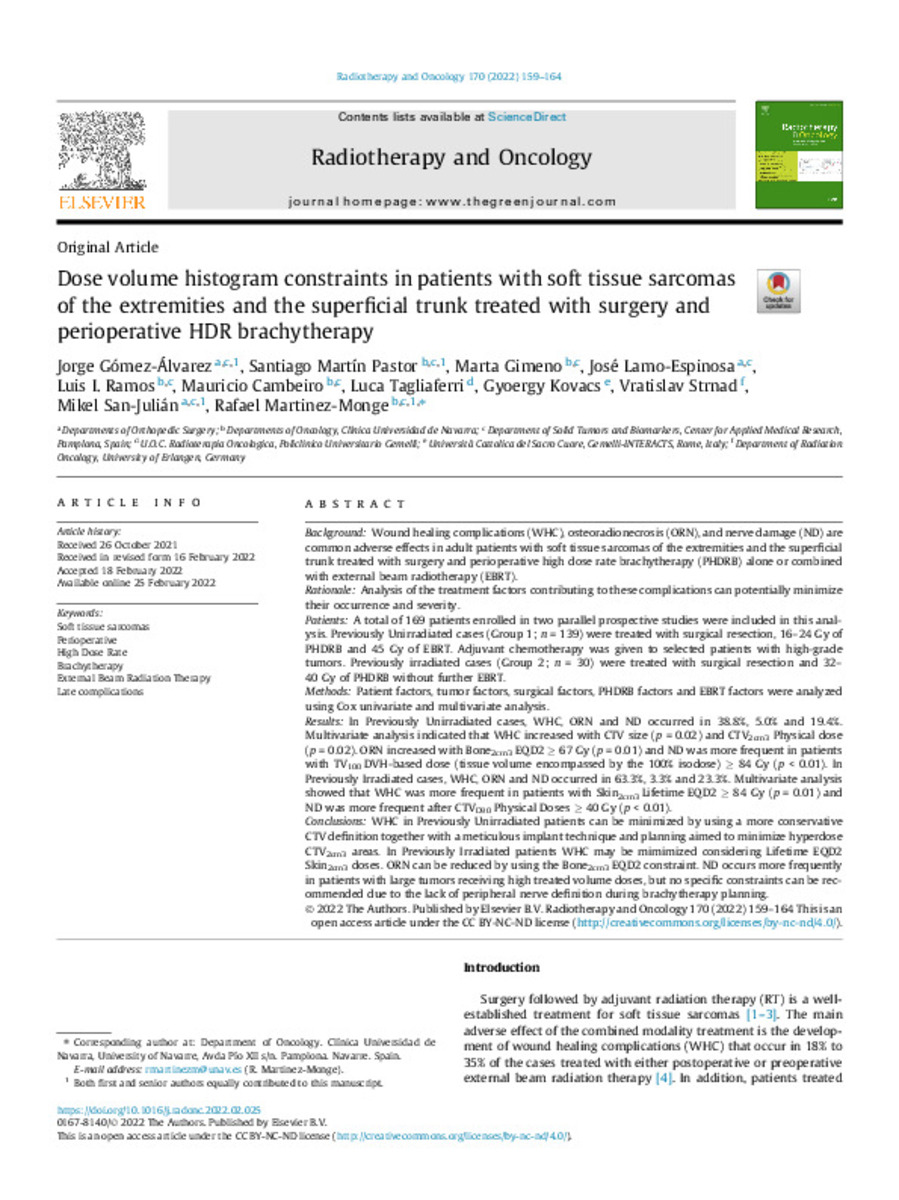Dose volume histogram constraints in patients with soft tissue sarcomas of the extremities and the superficial trunk treated with surgery and perioperative HDR brachytherapy
Keywords:
Soft tissue sarcomas
Perioperative
High Dose Rate
Brachytherapy
External Beam Radiation Therapy
Late complications
Note:
This is an open access article under the CC BY-NC-ND license
Citation:
Gómez-Álvarez, J. (Jorge); Martin, S. (Santiago); Gimeno, M. (Marta); et al. "Dose volume histogram constraints in patients with soft tissue sarcomas of the extremities and the superficial trunk treated with surgery and perioperative HDR brachytherapy". Radiotherapy and Oncology. 170, 2022, 159 - 164
Statistics and impact
0 citas en

0 citas en

Items in Dadun are protected by copyright, with all rights reserved, unless otherwise indicated.







